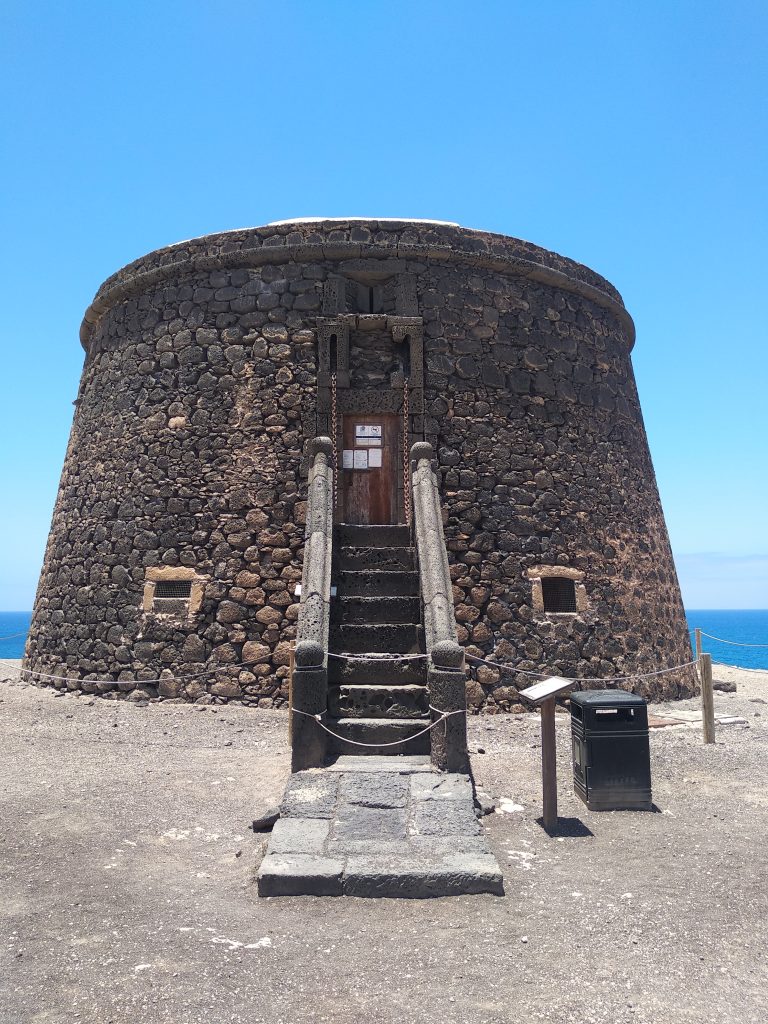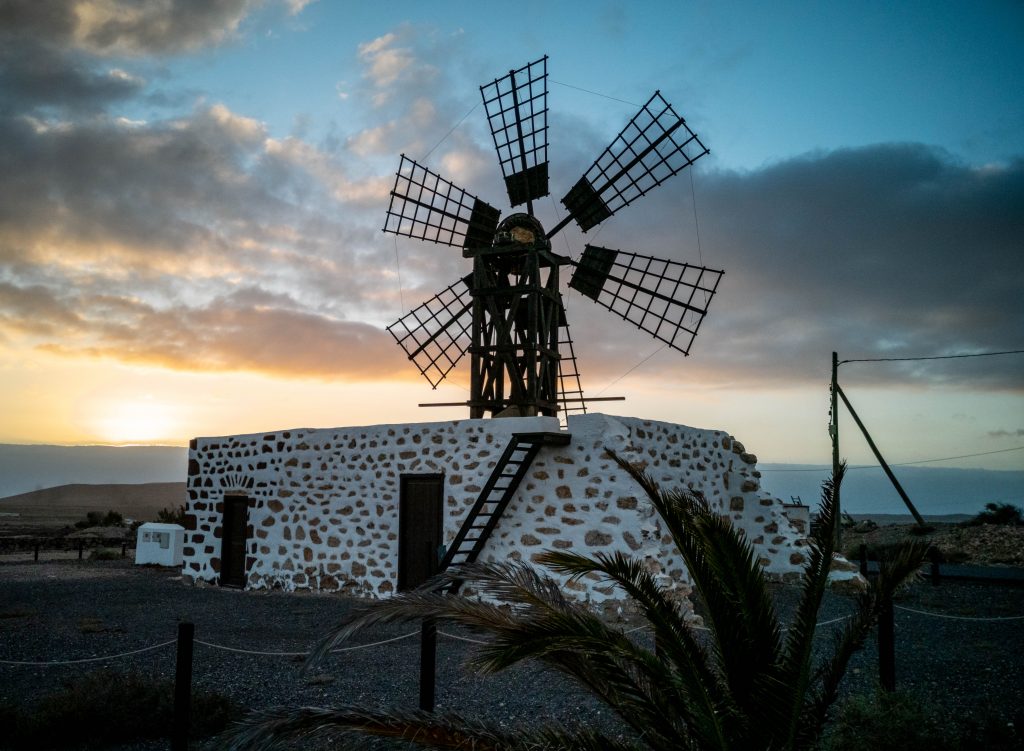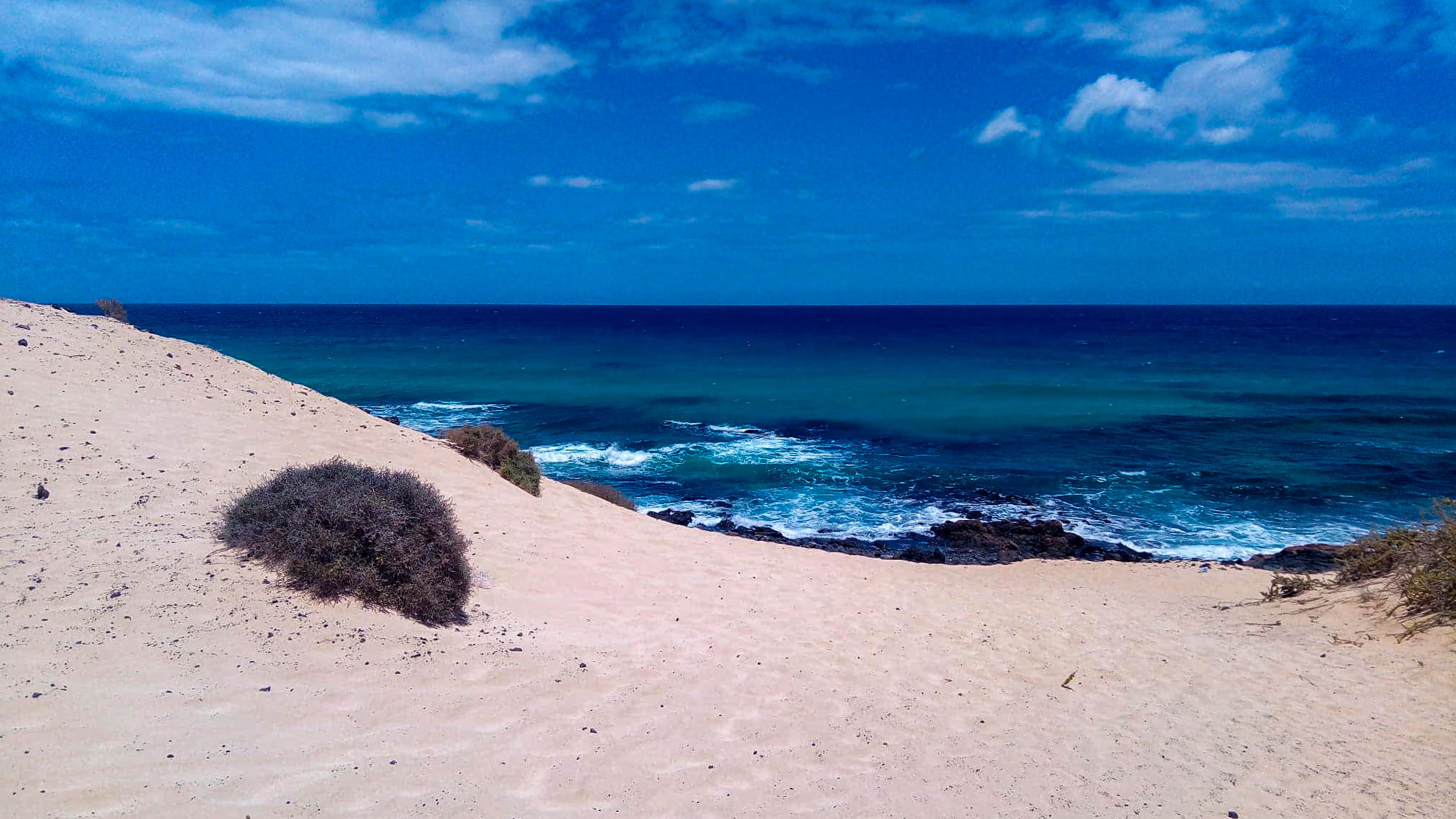North of Fuerteventura – 10 best places to visit
The North of Fuerteventura offers 10 fantastic places to visit that showcase the island’s unique combination of volcanic landscapes and stunning beaches with emerald waters and fine white sand. Two of the most important tourist centers in the area are Corralejo and El Cotillo. Corralejo is known for its spectacular dunes and immense beaches, while El Cotillo still maintains the essence of a fishing village.
1. Corralejo and the Sand Dunes
Corralejo boasts a wide range of leisure activities, with the main attraction being the Corralejo Natural Park. The dunes of Corralejo are arguably the most important attraction on the island, as they offer visitors a chance to experience a piece of the Sahara on a smaller scale. Unlike the Dunes of Maspalomas (Gran Canaria), these dunes have whiter sand and a larger extension. The dunes were declared a natural park in 1982, along with the Lobos Islet, and were officially named the Dunas de Corralejo Natural Park in 1994. The dunes have incalculable natural and scenic value.
From Corralejo, visitors can also take a short ferry ride to Lanzarote Island or to the Island of Lobos, which is only 20-30 minutes away.

2. Popcorn Beach
Popcorn Beach is a must-visit for any visitor to Fuerteventura. The sand at this beach has been replaced by a type of carbonic shell with a morphology and color resembling popcorn, which are known as rhodoliths. Over time, the waves have deposited these rhodoliths on the coast, creating a unique and fascinating landscape.
Important!!
Remember always to leave the white coral where you find it as taking it is strictly prohibited. If visitors take coral from the beach, the shore will eventually disappear.

3. Majanicho
Majanicho is one of the most enchanting places on the island, located in a small fishing village near Corralejo (about 9 km to the west). The beach is ideal for families with children, as the waters are very calm with no waves or strong currents.
4. El Cotillo
Located about 20 km west of Corralejo, the small town of El Cotillo offers a completely different landscape. As visitors pass the western side of the island, they will discover an area of cliffs, coves of black sand and stones.
The El Tostón Lighthouse is a hidden gem that is rarely visited by tourists but is a popular spot for local Canarian tourism. Inside the lighthouse is the Museum of Traditional Fishing, which showcases the customs and traditions of the Majoreros.
In the area around the lighthouse, visitors can explore small coves such as Marrajo Beach or Los Lagos, where nudism is allowed. La Caleta del Marrajo is a heavenly cove with white sand and crystal-clear waters.

The Tostón Castle was built on the ruins of the old defensive castle with the purpose of protecting the port of El Cotillo, which was of great importance for the trade of cochineal, cereals, and livestock.
Today, visitors can explore the inside of the castle, where different exhibitions are held. The castle also serves as a tourist information center.
5. Esquinzo Beach
- Esquinzo Beach is a secluded beach with golden sand and some rocky areas. As it has fewer visitors, it is a popular spot for nudists. The beach is around 330 m long and 33 m wide.
However, the beach is quite far from El Cotillo and access by car is difficult. It is better to use an off-road vehicle, walk or bike along the PR FV-1 route. For the more adventurous, walking down to the beach along the bed of the Esquinzo ravine is a great option.
6. Lajares
To the northeast of Lajares are the Calderón Hondo and the volcanic cones of Bayuyo. To the south is the Malpaís de la Arena Natural Monument, and to the west are the consolidated dunes of Los Jablitos.
Visitors to Lajares can also explore the windmills and the nearby small hermitage of San Antonio de Padua.

7. La Oliva
La Oliva is a small town that boasts the impressive church of La Candelaria. This magnificent structure was built in 1711 and stands as the largest church on the island of Fuerteventura. Additionally, visitors can also appreciate the historical significance of the Casa de Los Coroneles, which reflects the island’s military government system during the early stages of colonization.
8. Tindaya
The Montaña de Tindaya is a prominent feature in the arid and flat landscape of Fuerteventura. A path along the crest of the mountain allows visitors to explore and appreciate its natural beauty up close. The base of the rocky pyramid is home to small rock extraction quarries, which have been inactive for years. These quarries were once exploited by several companies. Visitors to the area can also explore nearby attractions such as the Cueva del Bailadero de Las Brujas, where women and men traditionally played games, or the Cueva del Bailadero de Los Pastores, where young girls and boys came to learn how to dance.
9. Puertito de los Molinos
Puertito de los Molinos is a fishing town that features a small beach. During winter, very strong tides cover the cove with pebble stones, while in summer, when the sea is calmer, the ridges give way to a blanket of brown sand.
At low tide, visitors can walk to the sea cave located south of Los Molinos beach. The largest cave is Herminia Cave, although there are several caves interconnected by arches in the cliffs themselves.
The best time to visit the caves is in September, during the super tide (El Pino tide) that marks the autumn equinox.
10. Puerto del Rosario
Finally, Puerto del Rosario has been the capital of Fuerteventura since 1860. It is the main city on the island, known for its cultural activities, festivals, and beaches.
Sharing is caring:
You can find me on my social networks:


One thought on “North of Fuerteventura – 10 best places to visit”